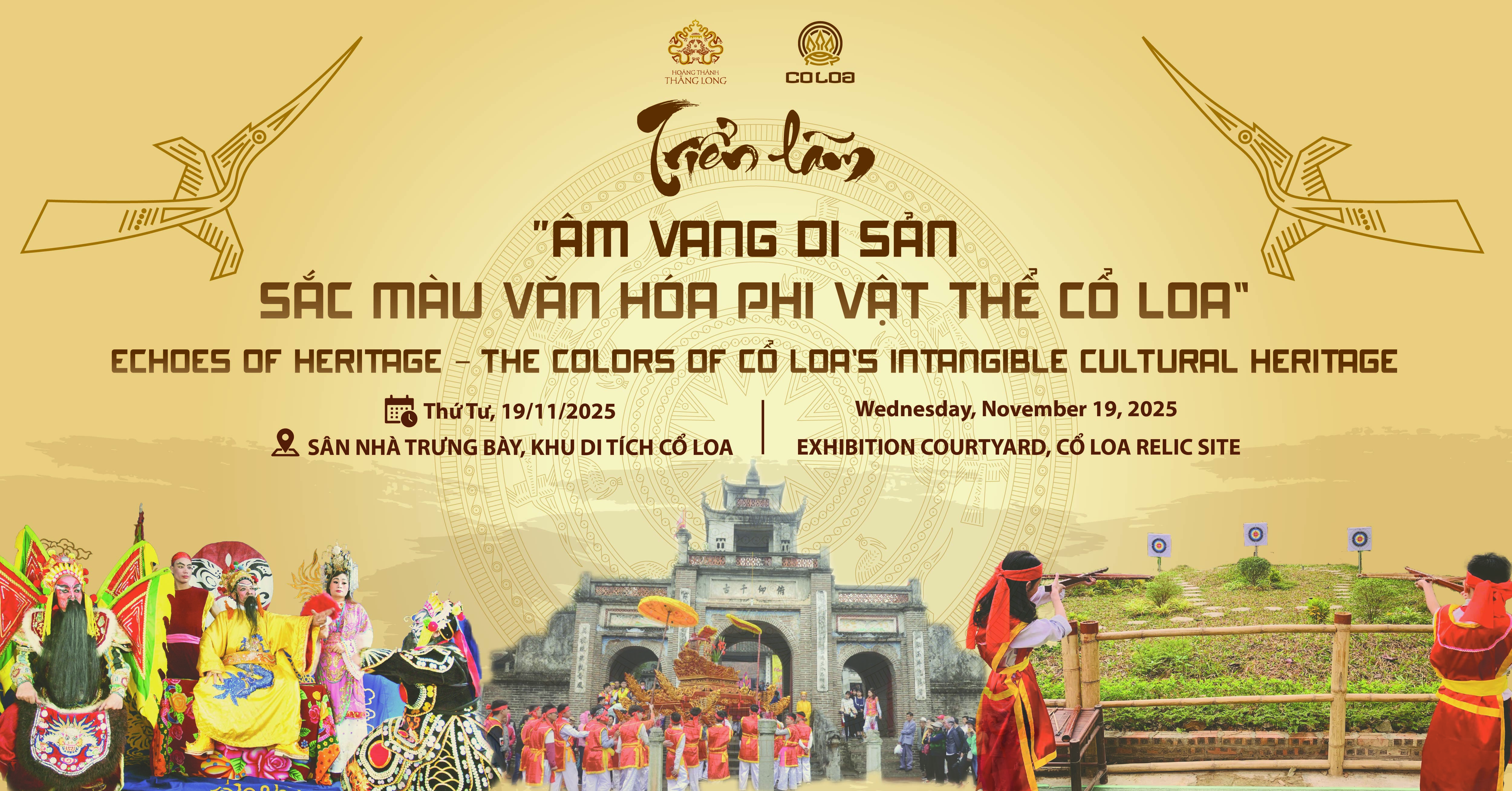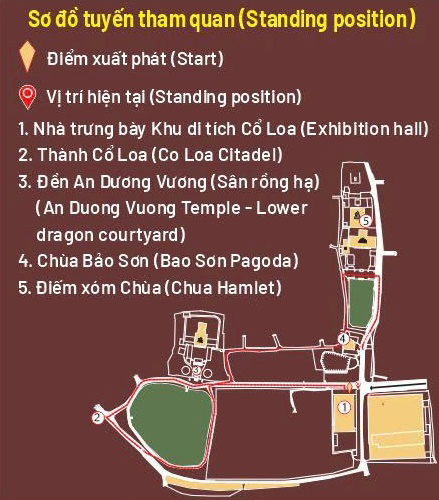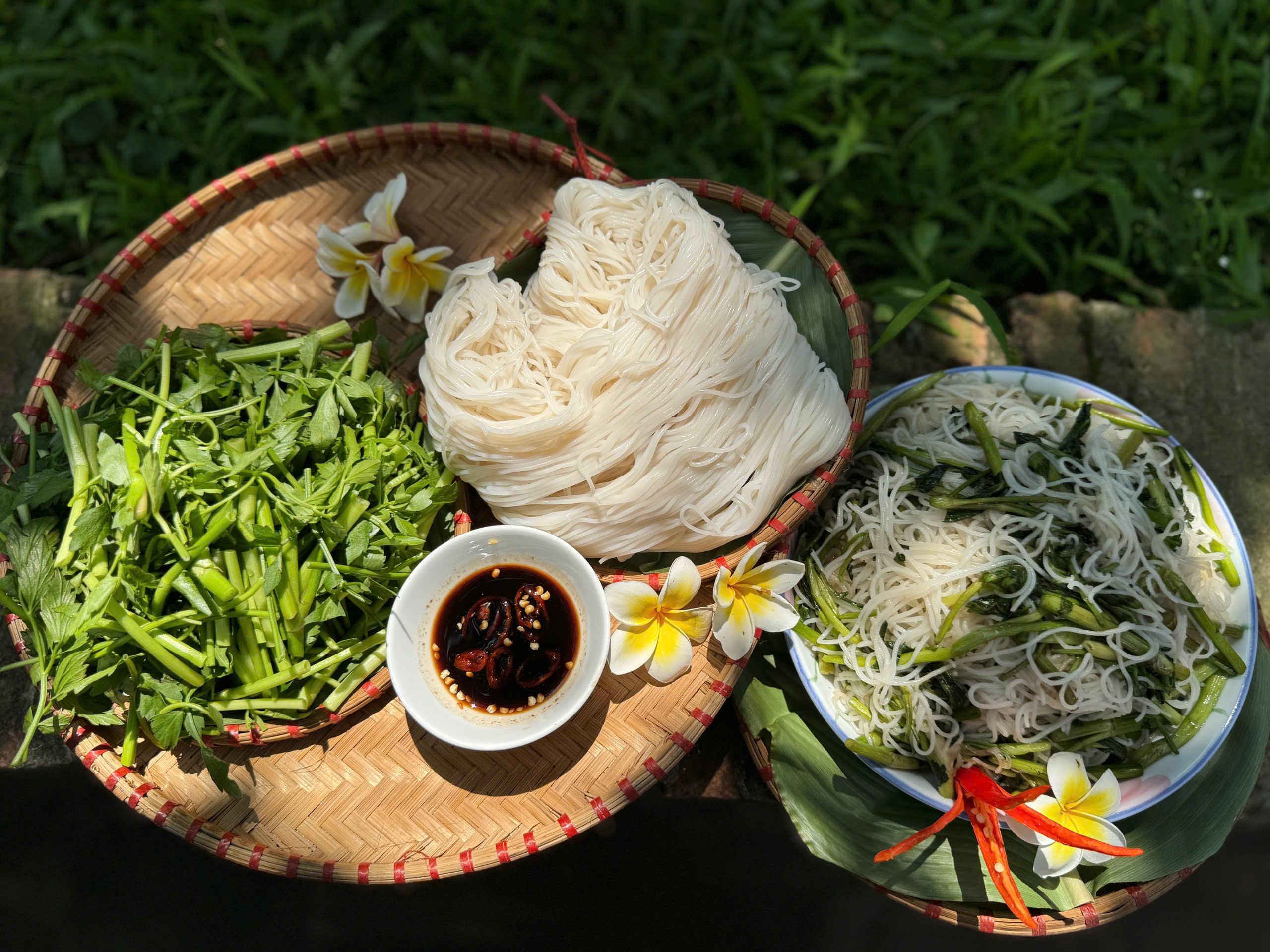
According to the book "Ngoc Pha Co Luc" was kept at Thuong temple (Co Loa commune, Dong Anh district, Hanoi city), the 13th day of the 8th lunar month every year is the day to “Ăn Sêu” (pre-wedding ceremony) Ba Chua My Chau - daughter of King An Duong Vuong. Sêu is an ancient custom of the Vietnamese people. This custom means that the groom brings offerings to his wife's house to show respect and gratitude for parents of his wife, as well as a proposal ceremon and a challenge for the future groom.
 A family makes traditional Mạch Tràng rice vermicelli
A family makes traditional Mạch Tràng rice vermicelli
A special thing is that in Co Loa village on “ăn sêu Bà Chúa” festival, everyone uses vermicelli Mạch Tràng as an offering to the ancestral altar and as a dish in the family. The origin of this special dish is associated with the princess pre-wedding day. According to legend, during the banquet to prepare for the pre-wedding ceremony of Princess My Chau, the person who made rice dumpling cake accidentally spilled the flour into the basket that was soaked in the cauldron of boiling water. He hastily lifted the basket, and powder had formed into long strands. Not willing to give up, he mixed this flour with water dropwort to make a snack. Unexpectedly, this dish was praised by the king and became a special dish in the king's reception party.
Mạch Tràng noodle has features that everyone can immediately see the difference from other types of vermicelli. Mạch Tràng vermicelli is not white, shiny and eye-catching, but has an ivory white color, crispy and cool noodles. In the past, people of Mach Trang used to choose “ba tai hồng”, “mộc tuyền”, C70 and C71 rice. Today's rice is mainly VT10 mixed with “khang dân”, C70, C71. Because these types of rice have a high flour content, they produce a lot of noodles.
Over time, the noodle maker Mach Trang has created a sophisticated, unique and unmistakable vermicelli. The first difference is in color, Mach Trang vermicelli is not made directly from raw flour, but through a thorough soaking process, so thoroughly that just a little squeeze makes the rice grain soft. In other vermicelli-making areas, usually the rice will be washed, cleaned and soaked overnight. Then put the soaked rice into a puree with water to form a flexible, pasty rice powder. At Mach Trang, the rice is carefully screened, removing all the flat seeds and the "soot" head, then washing and filtering out the grit. Before going to grind rice, it is incubated (using blankets to incubate) for about 2-4 days, depending on weather conditions. After incubation, the rice is taken out, washed and soaked in water for 1-2 days, when the rice is soft, it is milled. Powdered water is soaked for 2 days to reduce acidity, change the water 7-8 times a day to keep the water clear and the powder clean. Powder must be soaked in the old fired jar, the vermicelli will not be damaged. Then put it in the decanter to shake the water and compact the powder tightly. When the dough hardens, put it in the mortar. After that put it in "khỏa" to make it flexible. The workers bring the dough to cut it (called “quả trùng”) and then boil it for about 15-20 minutes, when the dough is yellow, then take it out. Next, boil the water to 100 degrees, then beat the water (use a coconut shell to spin the water), put the dough into the mold, use hands to twist continuously for the dough to fall into vermicelli. Noodles are then put into boiling water, stirring until cooked.
The ivory white color of vermicelli is due to the fermentation process. Thanks to the thorough soaking and incubation, Mach Trang vermicelli can be kept for up to 2 or 3 days without using any preservatives. The vermicelli are soft and chewy, although short but not broken, stir-fried with water dropwort without being crushed.
 Finished products of Mach Trang vermicelli
Finished products of Mach Trang vermicelli
Going through the stages, from making the dough, to the finished product, the noodles, after took it out of the pot, are squeezed into small, long leaves, which can be arranged around a basket lined with “ficus hispida” leaves to drain the vermicelli. These noodles are only the size of a leaf, so they are also called Mach Trang vermicelli leaves. Not everyone can catch even and beautiful vermicelli leaves, only experienced and long-time workers can do this. Vermicelli making requires meticulousness and high precision, which demonstrates the worker 's sophistication. They can not only be eaten with many kinds of food, which are called “bún mắm”, “bún chả”, “bún đậu”, etc., but also fried with water dropworts. The vermicelli fried with water dropworts have become a long-term traditional food of Cổ Loa. They serve as indispensable food for Cổ Loa people who devote them to An Dương King in the Cổ Loa festival (6th January – Lunar Calendar) and the sêu Bà Chúa day (13th August – Lunar Calendar).
During the French colonial period, vermicelli Mach Trang won a contest about vermicelli and also participated in exhibitions several times. Currently, Mach Trang vermicelli has reached out to the capital market, is promoted at food fairs and recognized as a traditional brand product according to Decision No. 4649/QDUB of the People's Committee of Ha Noi.
Not as white and shiny as the vermicelli of many other craft villages, but the vermicelli of Mach Trang village makes it difficult for anyone who has eaten it even once to forget its crispy, chewy and fragrant taste. Moreover, Mach Trang vermicelli also contains memories of a dynasty with many events in history - the reign of An Duong Vuong and the concerns of traditional craft villages in the period of the market economy.
MANAGEMENT DEPARTMENT OF COLOA VESTIGE SITE








